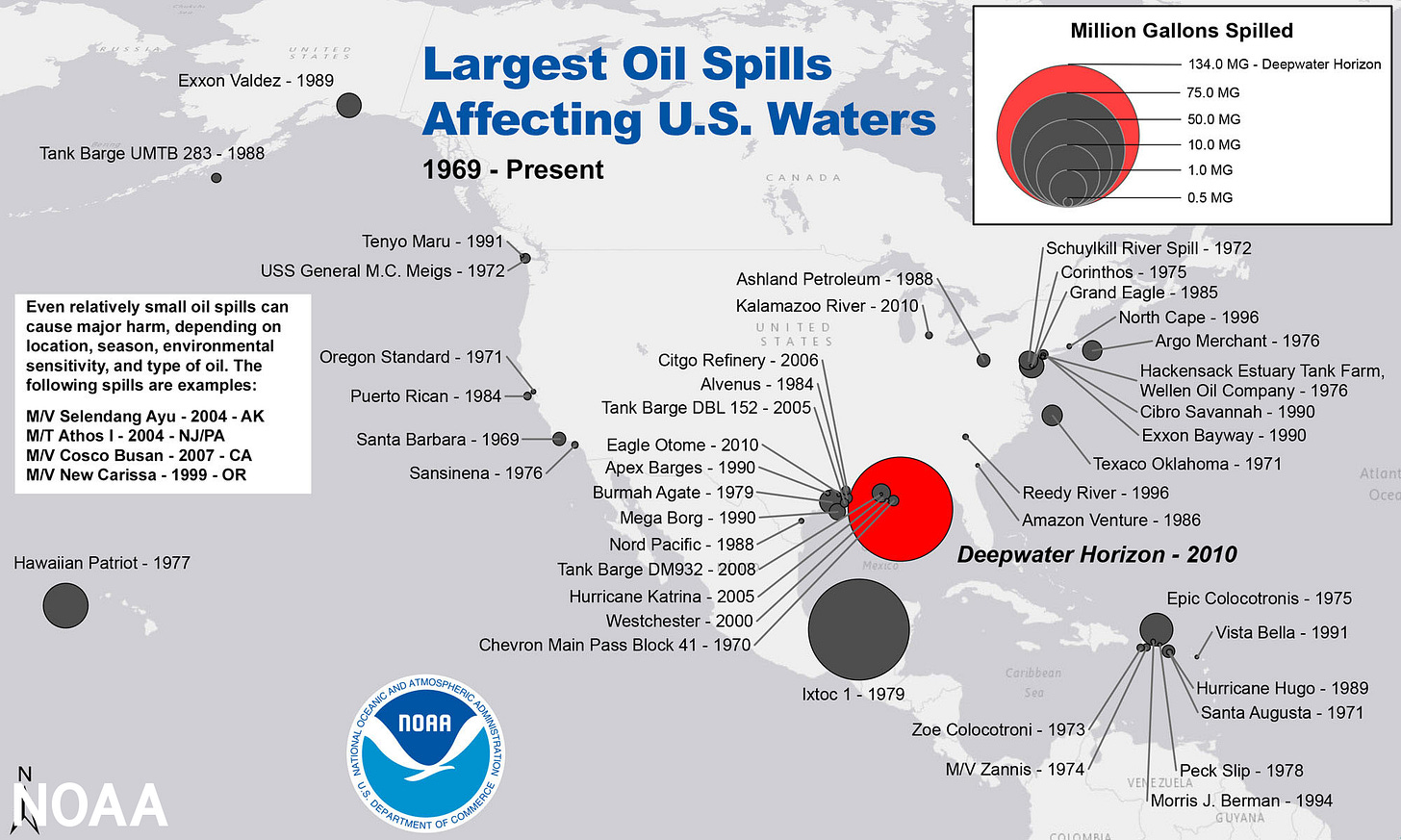Oops, They Did It Again!
California Pipeline Spill Highlights Need For Better Prevention & Response Plans

We couldn’t let the week go by without talking about the ongoing mess from the massive oil spill off the shores of California, with reports of dead birds and fish washing up on Huntington and Newport Beaches, and on protected marshlands.
Local beaches are closed and reek of oil.
Officials say that an estimated 3,000 barrels, or 126,000 gallons, of post-production heavy crude leaked into the ocean. Federal investigators are looking into what caused the pipeline to rupture and whether the pipeline owner shut down operations quickly enough after a safety system alerted to a possible spill.
While it’s devastating to the environment in Orange County, it’s a huge hit to Talbert Marsh, an ecological gem that locals have spent millions restoring since the 1980s. The marsh is home to about 90 species of birds and acts as an important rest stop for many migratory birds throughout the year.




Marshes help sequester carbon and help prevent erosion and flooding. In the last century, California has lost 90 percent of its marshes, and in one day this beautiful and important coastal wetland was destroyed.
Let’s talk about the Peter Parker principle, popularized by Spider-Man comics written by Stan Lee.
“With great power comes great responsibility”
This pipeline is owned by Houston-based Amplify Energy Corp., an independent oil and natural gas company.
Martyn Willsher was appointed president and CEO of Amplify on January 19, 2021, after having served as interim CEO since April 2020.
Before the spill, the company had a market capitalization of nearly $219 million, according to The Wall Street Journal.
Certainly not the biggest oil company on the block, but not the smallest either. Besides California, Amplify has operations in Oklahoma, the Rockies, Louisiana, and South Texas.
Where is the prevention plan? What funds have they set aside for emergency response? When it comes to pipelines breaking down, it’s not “if,” it’s “when.” How are oil companies large and small preparing for climate change and extreme weather events?
What is an oil spill, exactly?
“As the name implies, an oil spill refers to any uncontrolled release of crude oil, gasoline, fuels, or other oil by-products into the environment,” according to the USGS.
Oil spills can pollute land, air, or water.
“This oil spill off the coast of Orange County is as tragic as it was preventable,” said Congressman Alan Lowenthal, whose district includes parts of Orange County, in a statement. “This environmental catastrophe highlights the simple fact that where you drill, you spill. As we are sadly witnessing, when you drill along the coast, when you pipe that oil ashore, our coastlines will bear the brunt of the impacts from such spills.”
Two of the most well-known spills in our country are the 2010 during the Deepwater Horizon Oil Spill in the Gulf of Mexico, which spilled more 134 million gallons of oil and killed 11 people, and the 1989 Exxon Valdez Oil Spill in Alaska that spilled more than 11 million gallons of oil.
But oil spills happen all the time. Thousands of oil spills occur in U.S. waters each year, according to NOAA. While many spills are small, that can still damage beaches, mangroves, and wetlands.
Cleanup activities don’t fully remove all of the oil spilled, and scientists have to be careful that their actions don’t cause additional harm. After the Exxon Valdez disaster, scientists learned that high-pressure, hot-water hoses used to clean up beaches caused more damage than the oil itself.
Talk about hypocrisy, California
“California has some of the most ambitious climate goals in the United States—it’s aiming for net-zero emissions by 2045, five years earlier than the federal goals—and boasts some of the strongest environmental protection rules in the country,” reports Alejandra Borunda for National Geographic. “Yet California is still a fossil fuel powerhouse, and oil spills are not a new phenomenon along the coast.”
A Balance of Power
The oil and gas industry holds a lot of power in this country. The industry spent more than $55 million on lobbying in 2021 alone to control, delay, or block climate-motivated policy. In 2019, the industry spent more than $125 million.
Who did Amplify call when reports came in about an oil sheen several miles off the coast? The U.S. Coast Guard! Who pays their salary? We do.
You can’t make hundreds of millions of dollars in profit and then expect public funds to clean up your mess.
“There is no doubt that the cleanup of this disaster will take time, but the cost should not be brunt on the shoulders of the taxpayers—the industrial polluters must bear the cost to cleanup, rebuild destroyed habitats, loss of wildlife, and any economic loss associated with this event,” Lowenthal said.
The Oil Pollution Act of 1990 helped established that those responsible for these spills can be held responsible to foot the bill for cleanup and restoration. This process of assessing the impacts of a spill and reaching a settlement to fund restoration projects is called Natural Resource Damage Assessment.
Recovering those funds takes time. An $8.8 billion settlement for restoration wasn’t reached for the Deepwater Horizon spill until 2016, and restoration continues today.
These spills cause unbelievable headaches and heartache for local communities, citizens, and regulatory agencies, along with devastation to natural habitats.
For the latest information on the Southern California spill go to: https://socalspillresponse.com




Licensed to spill & kill in ways we can never completely recover... Polluting Poison On Purpose Profits #PPOPP #MakeItStop #DoNoHARM